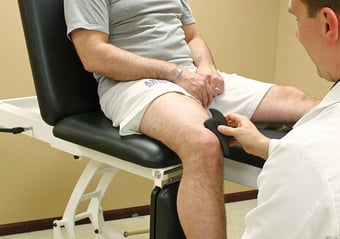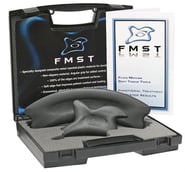 Instrument-assisted soft-tissue mobilization (IASTM) is on the rise among health care practitioners, especially doctors of chiropractic (DCs). In fact, more than 16,000 clinicians are now using the technique worldwide, using tools like PHS Chiropractic’s Fluid Motion Soft Tissue Tools. The benefits are huge—not only for patients but for DCs too. Caitlin Lukacs of ACA News explains.
Instrument-assisted soft-tissue mobilization (IASTM) is on the rise among health care practitioners, especially doctors of chiropractic (DCs). In fact, more than 16,000 clinicians are now using the technique worldwide, using tools like PHS Chiropractic’s Fluid Motion Soft Tissue Tools. The benefits are huge—not only for patients but for DCs too. Caitlin Lukacs of ACA News explains.
What Is IASTM?
Though doctors of chiropractic (DCs) have always used their hands to increase blood flow and break up restrictions in injured soft tissue, fingers alone can’t detect restrictions at deeper levels or treat the full range of restrictions. Because of this, several companies have now developed handheld tools to perform instrument-assisted soft-tissue mobilization.
It’s important to note that what gives IASTM the ability to reinitiate first-stage healing is that it is essentially reinjuring the body, although to a lesser degree, which may cause discomfort during the procedure and bruising afterward. “Patients may experience soreness in the treatment area for a day or two following IASTM,” explains Marc Heller, DC, an expert in IASTM who practices in southern Oregon.
The injuries—or types of injuries—that respond best to IASTM include acute and chronic spinal and extremity problems, such as tendinopathies, Achilles tendinosis, rotator cuff injuries, IT band syndrome and plantar fasciitis, among others. And Dr. Heller notes that the patients who see the best results from IASTM are those who are younger and more physically active. “A person who is willing to exercise the involved tissues is more likely to respond well to this particular type of treatment,” he says. “But that doesn’t mean that it won’t work on older patients or on those with a more sedentary lifestyle.”
Treatment Protocol
In very basic, general terms, Travis McCathie, DC, ATC, director of the Northwestern Health Sciences University’s Center for Sports and Rehabilitation, recommends a three-step approach to IASTM:
1. Warm up the tissue to make it more pliable;
2. Perform IASTM; and
3. Have the patient engage in light exercise.
“You want to start with tissue in its most workable state,” he explains. “This helps you get the most benefit from the treatment.” Then, after performing IASTM, you should guide your patient through some form of easy exercise—usually a lower-intensity, higher-rep workout. For example, if you’re working on a hamstring and you break up some of the scar tissue with an instrument, it’s important to then put that muscle through light exercises to restore its movement pattern, says Dr. McCathie.
IASTM is often accompanied by home exercise: stretching muscles to build flexibility and strength in the area of the injury. While soft-tissue injuries, particularly chronic soft-tissue injuries, can’t be healed overnight, patients who perform the home stretches and exercises prescribed by their DC greatly accelerate the process.
Benefits for DCs
In addition to improved diagnostic treatment/outcomes and increased patient satisfaction, IASTM also reduces the stress placed on the hands and arms of the practitioner and expands business opportunities. Warren Hammer, DC, DABCO, who practices in Norwalk, Conn., notes that many studies have shown that the most frequent injuries to clinicians in the physical therapy field involve the wrists and upper extremities. “IASTM would certainly save the practitioner over the years,” he says.
Instrument-assisted soft-tissue mobilization can also help bring in new patients. “It’s becoming somewhat of a niche now. People are getting good results, and it’s becoming well-known to the general population,” says Dr. Hammer. This is resulting in more and more patients seeking out practitioners who use instruments.
Too often DCs rely entirely on spinal or joint manipulations, and that’s not sufficient for treating the whole structure. DCs need to work with the connective tissues and the muscular system as well, says Dr. Hammer. “The future of chiropractic depends on us being more aware of, and treating, soft tissue modalities and not simply falling back on manipulation,” he warns.
Dr. McCathie also recommends that any practitioner interested in adding IASTM to his or her repertoire should experience the treatment for him- or herself. “Everyone should understand what it feels like to have it done by a skilled provider,” he notes.

Would you like to learn more about FMST tools?
Request more information below.


